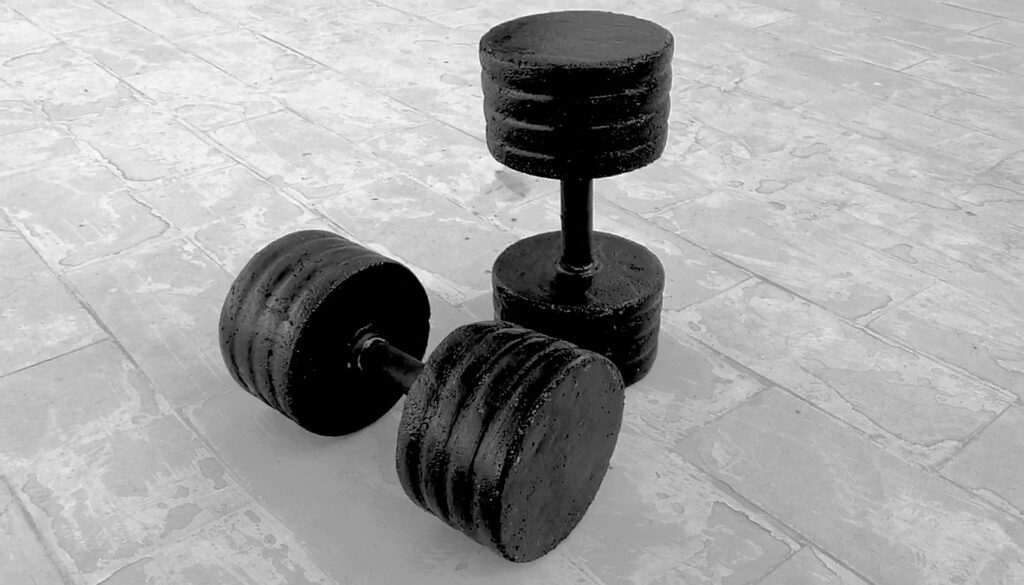Starting a fitness journey frequently means stumbling upon pricey gym equipment, but what if I told you that you could create your own route to strength training paradise in the comfort of your own home? In this article on “How to Make Dumbbells at Home,” we’ll explore the process of creating these necessary exercise equipment out of common home objects. Come along with me on this imaginative journey as we look at low-cost methods of creating dumbbells that meet your training requirements. Are you prepared to unlock the mysteries of DIY fitness innovation? Let’s go into the realm of do-it-yourself projects and learn how to create dumbbells at home, which will organically add a practical and unique touch to your exercise regimen.
Table of Contents
Your Ultimate Guide on How to Make Dumbbells at Home
In a world where fitness often comes with a hefty price tag, what if I told you there’s a way to sculpt your strength without breaking the bank? Today, we’re delving into the realm of DIY with a guide on “How to Make Dumbbells at Home.” No need for a fancy gym membership or expensive equipment – just a sprinkle of creativity and household items. Let’s embark on a journey of fitness ingenuity together, as we explore practical ways to craft dumbbells tailored to your workout needs. So, pull up a chair, and let’s chat about making fitness uniquely yours, all from the comfort of your home. Ready to discover the secrets of homemade fitness innovation? Let’s dive in
The Water Bottle Dumbbells
One of the simplest and most cost-effective ways to make dumbbells at home is by using water bottles. Begin by collecting sturdy plastic bottles and filling them with water, sand, or a combination of both to reach your desired weight. Secure the cap tightly and voilà – you have a makeshift dumbbell ready for your workouts.

The Cement Block Dumbbells
For those seeking a more robust option, cement block dumbbells are an excellent choice. Obtain two cement blocks, ensuring they are of equal weight. Connect them with a metal rod or PVC pipe, creating a durable and adjustable dumbbell. This method provides a heavier option for those looking to increase the intensity of their strength training.
The Sandbag Dumbbells
Creating sandbag dumbbells is another effective DIY approach. Fill sturdy bags with sand, ensuring they are securely sealed. Place these sandbags into old socks and tie them off at both ends. You now have a flexible and adaptable dumbbell that can be adjusted to your preferred weight.
The PVC Pipe Dumbbells
PVC pipes are versatile and readily available at hardware stores. To make a PVC pipe dumbbell, measure and cut the pipe to your desired length. Fill the pipe with sand or water, seal the ends, and cap them securely. This method allows you to customize the weight by adjusting the amount of filling.
The Rice Bucket Dumbbells
For a more eco-friendly option, consider repurposing household items. A rice bucket dumbbell is created by using a sturdy container filled with rice. Secure the lid tightly and hold onto the handle for various strength exercises. This method is not only cost-effective but also environmentally friendly.
Benefits of Homemade Dumbbells

- Cost-Effective Fitness: Creating dumbbells at home eliminates the need for expensive gym equipment, making fitness accessible to those on a budget.
- Personalized Workouts: Homemade dumbbells allow you to customize the weight to suit your fitness level, providing a personalized workout experience.
- Versatility: DIY dumbbells offer versatility in terms of materials used and adjustable weights, catering to individual preferences and workout goals.
- Sustainable Fitness: Repurposing household items for homemade dumbbells contributes to a more sustainable approach to fitness, reducing the need for manufactured equipment.
Safety Tips:
- Secure Seals: Ensure that all seals are tightly secured to prevent leaks and maintain the integrity of your homemade dumbbells during workouts.
- Weight Distribution: When using materials like sand or water, evenly distribute the weight to create a balanced and safe dumbbell.
- Regular Checks: Periodically check the condition of your homemade dumbbells to ensure they remain in good shape for safe and effective workouts.
Conclusion:
Crafting dumbbells at home is a practical and affordable way to integrate strength training into your fitness routine. Whether using water bottles, cement blocks, sandbags, PVC pipes, or repurposed household items, the possibilities are endless. By embracing the DIY approach, you not only save money but also contribute to a sustainable and personalized fitness journey. Start crafting your homemade dumbbells today and embark on a path to a healthier, fitter you.
Why make dumbbells at home when I can buy them?
Making dumbbells at home can be a cost-effective alternative, especially if you’re on a budget. It allows for customization and creative use of materials readily available at home.
How do I choose the right weight for my homemade dumbbells?
The weight depends on your fitness level and workout goals. Start with a lighter weight and gradually increase it as you build strength. Experiment with different materials like water, sand, or rice to find the right weight for you.
Are homemade dumbbells as effective as store-bought ones?
Homemade dumbbells can be effective for basic strength training. However, they may not have the same durability and precision as commercial options. It’s crucial to use proper sealing and balancing techniques to ensure safety during workouts.
Are there any safety considerations when making homemade dumbbells?
Safety is paramount. Ensure all seals are tight to prevent leaks, evenly distribute weight for balance, and regularly inspect your homemade dumbbells for wear and tear. Always follow proper form during exercises to avoid injuries.
Are there any alternatives to traditional dumbbell materials?
Yes, there are many alternatives based on what you have at home. Rice-filled buckets, laundry detergent jugs filled with water, or even bags filled with books are creative options. Experiment to find what works best for you.
Can I use homemade dumbbells in a workout routine with professional trainers?
Yes, many trainers incorporate DIY equipment into their routines. Communicate with your trainer about your homemade dumbbells, and they can provide exercises tailored to your equipment while ensuring you maintain proper form and safety.
